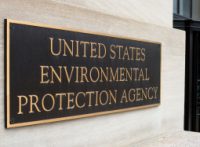Tag: EPA
EPA Gets Serious About SPCC Inspections
Training Tips for Good Container Management
Developers Pay for Stormwater Violations–Enviro Enforcement Wrap-Up
RCRA Says Tossing Rags is a Rule-Breaker
UST Release Reporting: How to Know What to Do and When
Immediately After Release If you suspect that a release may have occurred, you must immediately notify your state or local implementing agency. If the tank is in territory controlled by Native Americans, you must contact the EPA regional UST program office. Quick action on your part can minimize the extent of environmental damage and the […]
Are You Prepared for an SPCC Plan Inspection?
By Amanda Czepiel, J.D. BLR Legal Editor For many, that question will be answered during an EPA inspection. Your best bet to pass an SPCC plan inspection? Be prepared. EPA has been conducting SPCC plan inspections since 1973 in an effort to minimize oil spills from reaching U.S. waters, and in recent years, has stepped […]
Hazmat Training Checklist for Compliance
Are you a “hazmat employer,” i.e., anyone who: Uses one or more workers to transport hazardous materials in commerce? Transports hazardous materials in commerce or causes hazardous materials to be transported or shipped in commerce? Manages packaging that is qualified for transporting hazardous materials (e.g., designs, manufactures, fabricates, inspects, marks, certifies, sells, reconditions, repairs, or […]
SPCC Requirements: What Does EPA Mean When It Says …?
The determination of whether your facility has the potential to discharge, or "could" discharge, is based on the location of your facility in relation to streams, ponds and ditches (both perennial or intermittent), storm or sanitary sewers, wetlands, mudflats, sandflats, or other navigable waters. You should take into account the distance to navigable waters, volume […]
To Manifest or Not
Here’s the answer. Manifest procedures for shipments of containers that do not meet the EPA definition of “empty” (as defined in 40 CFR 261.7) are addressed in the federal regulations at 40 CFR 263.21(b) and 40 CFR 264/265.72. Container residues, which are residues that exceed the quantity limitations for an “empty container,” are considered a […]








